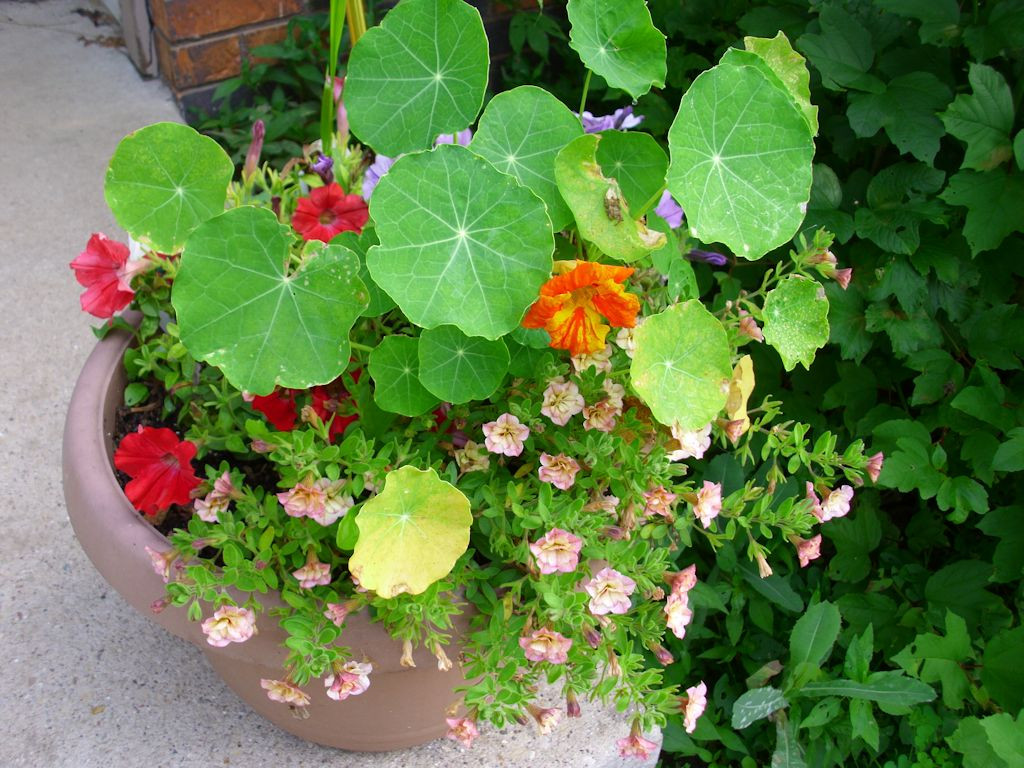Every summer I plant flowers to make the area around the house cheery. There are flowers in the front, in the back, and in a tire next to my clothes line. Most of the flowers are arranged and I know the names of the vast majority of them. Some of the patio favorites are princess feathers, nasturtiums, snap dragons, alyssum, and morning glories. The flowers appear at different levels and mixed with herbs (peppermint in this case) to provide interest:

The fairy garden, old shoes, tree trunk, and other elements all help create an interesting mix that provides a feast for the eye. The fairy garden is a gift from a friend. I add new plants to it each year. This year’s flowers are quite nice:

One of my favorite flowers in the hanging pots in the back of the house is the morning glories (mixed with nasturtiums in this case):

The front porch usually has wave petunias mixed with an assortment of other flowers in two pots (one on each side of the porch). I try to get them to match the furniture and fixtures on my front porch, including the doormat and the goose neck lights, as I like everything to tie together. The color combinations are interesting this year because one of the mixed in elements are nasturtiums (of three different colors no less):

The other pot uses the same concepts, but with different colored flowers. So you see the same idea on both sides, but the contrasting flowers prove to be quite nice. Both sides actually do have all three colors of nasturtium, but it’s apparently against the rules for all three to bloom at the same time:

Organization is nice, but sometimes you need a little creative chaos, which is where my tire flowers come into play. I simply sew seeds from a mixed flower packet and enjoy whatever comes up. Sometimes I’m not sure about the names of the flowers. This year I did end up with a sunflower and something interesting called love lies bleeding (the prominent strings of flowers are the love lies bleeding).

That really long strand in the front is a single flower. Even though some flowers, like the sunflower, attempt to steal the show, it’s important to look everywhere. Some flowers shyly peek out from near the bottom of the tire:

Of course, there is a lot more to see, but these are some of the highlights of the flowers for this year. The point is that summer lends itself to some beautiful arrays of flowers to please the eye (and sometimes the palette, nasturtiums, among other flowers, are edible). Make sure you plant plenty of posies to keep your heart happy.







